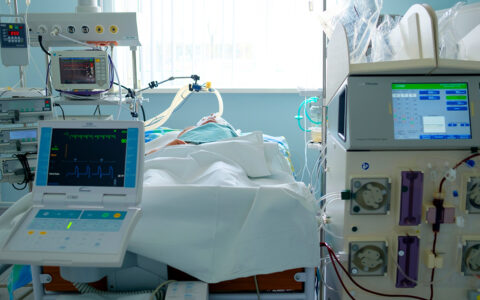Genetic and environmental factors that determine the progression of interstitial lung disease (ILD) are not well understood. New clues from a recent study show that in a subset of patients with familial ILD, there appears to be a considerable length of time when individuals have radiologically detectable evidence of early disease but no symptoms.
The analysis, published in the American Journal of Respiratory and Critical Care Medicine, looked at asymptomatic people with at least two first-degree relatives with ILD. Most had relatives with idiopathic pulmonary fibrosis (IPF).
“We were interested in looking at what proportion of those individuals without any symptoms or any known lung problems had early signs of disease on a screening CT scan of the lungs,” said Margaret Salisbury, M.D., assistant professor of medicine at Vanderbilt University Medical Center and lead author of the study. “We were also interested in identifying factors in people’s environments that might be risk factors for early disease.”
Longitudinal Follow-up
The interim analysis, part of an ongoing study of familial interstitial pneumonia (FIP), looked at a cohort of 336 family members who underwent high-resolution CT scans between late 2008 and early 2019, of whom 265 completed environmental exposure questionnaires.
The individuals who received CT scans entered the cohort at a time when they were not known to have any lung disease – including no significant pulmonary symptoms. Subtle, suspicious findings on the scans were marked by a radiologist. A subgroup enrolled in the study early (86 participants) underwent follow-up CT scans five years later to determine whether there had been any progression of the early CT findings.
Twenty-three percent of the total number enrolled showed changes that could be early disease, Salisbury said. Of those having the second CT scan five years later, about 20 percent showed disease progression. “In those with suspicious findings on their first CT scan, about 60 percent got worse,” Salisbury said. “In those with no suspicious findings, only about six percent developed changes.”
“In those with suspicious findings on their first CT scan, about 60 percent got worse.”
Environmental Risks
The environmental history questionnaire was administered prior to the screening CT, minimizing recall bias. Most previously published studies examining environmental risk factors for ILD have used case-control methodology, administering questionnaires and comparing someone who knows they have disease with someone who does not have disease, Salisbury explained.
The investigators found four modifiable environmental exposures on the questionnaire that were significantly associated with having early changes on the CT screening scan.
“These four factors – mold contamination in the environment, exposure to birds (raising birds on a farm or keeping pet birds), exposure to lead, and aluminum smelting in the workplace – are likely risk factors for disease,” said Salisbury. It is already well known that cigarette smoking is a very strong risk factor in developing disease, she added.
Treatment Implications
Salisbury said that follow-up of this cohort will continue. “We hope to get more information about the rate of disease development and progression as more people return and get their follow-up CT scans every five years. We’re also looking into ways we can learn how these environmental factors contribute to disease progression.”
Whether to do early CT screening outside of a research study remains an open question. “These data certainly have implications regarding the timing of onset – maybe even for overall lifetime development of lung disease. But we still don’t know if early identification changes disease outcomes, or when to start and how frequently to screen individuals at high genetic risk for disease,” Salisbury said.
“The fact that a lot of people with early changes do progress suggests that even very minor findings on the CT scan might be meaningful and some of these environmental factors could be avoided to reduce risk.”
“Even very minor findings on the CT scan might be meaningful.”




